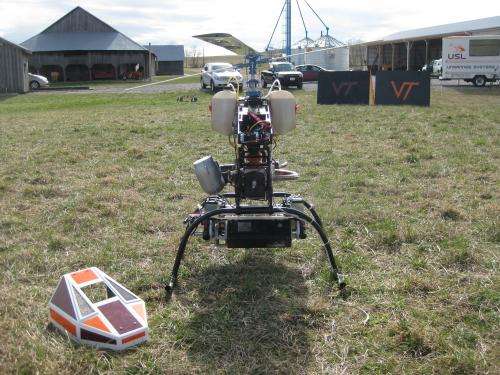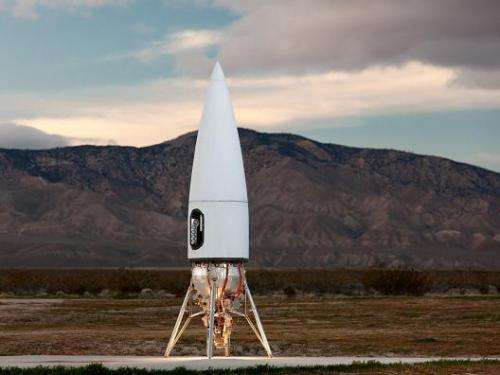NASA selects astrobotic to demonstrate asteroid and moon landing technology

Last week Astrobotic successfully flew a sensor package designed to guide spacecraft safely to the surface of asteroids, moons, planets, and beyond. The flight occurred on an unmanned helicopter operated by a pilot on the ground. The flights are preparation for demonstration of this capability on a propulsive lander similar to Astrobotic's Griffin. Astrobotic was selected by NASA for flight opportunities on a propulsive lander which culminate in a fully autonomous landing demonstration with hazard detection, trajectory planning, and closed-loop control.
"This flight opportunity represents a major milestone not just for us, but for spacecraft in general. We'll be the first to demonstrate a GPS-denied propulsive landing from high altitude that can re-plan its route after discovering its targeted landing area is unsafe to land," said Kevin Peterson, Director of Guidance, Navigation, and Control for Astrobotic.
The helicopter flight is one of a series of flights to occur over the next few months. These flights will verify performance of the underlying hardware and software. When the software has reached stability with predictable performance, it will be tasked to land the helicopter by itself—without GPS. Astrobotic's landing sensor uses two cameras, an inertial measurement unit, and a scanning laser.

"The pair of cameras work together like human eyes to measure distance and track motion. The scanning laser gives precise distance measurements and enables us to pick out hazards as small as a curb. The sensor combines these sensors with an inertial measurement unit—the device that enables smartphones to switch from landscape to portrait mode— to build its models," Peterson explained.
The program will exhibit terrain relative navigation, which enables precise landing on planetary bodies without GPS. The spacecraft will autonomously compare imagery captured from cameras with maps from satellite imagery to determine its location. This technology will revolutionize access to planetary surfaces through a 100-fold increase in the accuracy of planetary landings.
Provided by Google Lunar X PRIZE



















